PIC
The PICs or Programmable Intelligent Controllers are microcontrollers very popular for their ease of use and low cost, created by Microchip (www.microchip.com).
All of them are available in ITP (One-Time Programmable Packages) enclosures, using the same set of instructions.
Like other microcontrollers, PICs can be used to add intelligence to mechatronic projects and other types such as automation, IoT, wearable, etc.
Selecting a PIC
Nowadays the assemblers who wish to elaborate a mechatronic project can count on hundreds of different types of PICs whose characteristics differ according to the application, just like in the case of Arduinos, as we saw in the previous item.
Microchip itself on its website provides a search engine that, entering with the characteristics of the project that we intend to develop, indicates the PIC that should be used.
The basic criteria to be used in the selection of a PIC includes the following items:
- Program memory size
- Data RAM size
- Memory type
- Casing
- Existence of additional resources
On http://www.microchip.com/design-centers/microcontrollers the reader will find information on the types available.
In the same way as the other microcontrollers programming is done by connecting the programming board to a PC, as shown in Figure 1.
.

How to use and program, as in previous cases, depends on each type and there is information in the datasheets of the manufacturer that should be consulted.
In them also are found ready applications that can be used in a project.
To access a wide variety of types for sale we suggest to consult Mouser’s website.
MSP430
The Texas Instruments MSP430 family of microcontrollers, because of their ultra-low power characteristic, is especially suitable for battery-powered applications such as robots, standalone vehicles, IoT, wearable, etc.
The idle consumption can be as low as 1 µA depending on the type and the frequency can reach 25 MHz. They also have six low-power programming modes and operate from that state in a very short time, in the order of 1 microsecond.
The MSP430 is in its sixth generation, with its own designation:
So, in the typical numbering we have something like:
MSP430F2618ATZQWT-EP, as in the table below.

In it we have:
a) First Group (MSP) - Family of processors
b) Second group (430) - Platform
c) Third group (F) - indicates the type of memory
d) Fourth Group (2) - Device Generation
e) Fifth group (6) - model within generation
f) Sixth group (18) - one or two digits indicating the amount of memory according to the table:
| Sufix | RAM | ROM | Sufix | RAM | ROM | |
| 0 | 128 | 1 K | 10 | 5 K | 32 K | |
| 1 | 128 | 2 K | 11 | 10 K | 48 K | |
| 2 | 256 | 4 K | 12 | 5 K | 55/56 K | |
| 3 | 256 | 8 K | 13 | |||
| 4 | 512 | 12 K | 14 | |||
| 5 | 512 | 16 K | 15 | |||
| 6 | 1 K | 24 K | 16 | 4 K | 92 K | |
| 7 | 1 K | 32 K | 17 | 8 K | 92 K | |
| 8 | 2 K | 48K | 18 | 8 K | 116 K | |
| 9 | 2 K | 60K | 19 | 4 K | 120 K |
g) Optional suffix indicating device variant with additional features (A)
h) Suffix indicating the temperature range (T) - in the case -40 to + 105 ° C
g) Casing (ZQW) - as Texas
h) Final letters (EP) indicating additional resources, in the case qualified for automotive use.
On the author's website can be found several projects with this microcontroller as well as on the website of Texas Instruments (www.ti.com).
Renesas
This is another company that provides a good line of microcontrollers for mechatronics applications and much more. Its microcontrollers are simple to use, robust and low cost with several families available that can be consulted on https://www.renesas.com/en/products/microcontrollers-microprocessors.html
The main families are:
RL78 - 32 MHz, 1.6-5.5 V and stand-by current of 46 µA
RX - 32 MHz to 240 MHz, flash memory up to 4 MB with USB, CAN, timer for motor control and TFT.
RH850 - low consumption, high temperature operation for control applications.
RZ - Based on ARM with display
Full-HD Video Codec
Other families can be consulted on the company's website.
NXP
This company also offers a wide range of microcontrollers for the most diverse uses, including mechatronics, robotics, IoT and much more.
These are based on MCUs ranging from 8 to 32 bits, as shown in the table below.
LPC54000 Series MCUs
A power-efficient, mainstream series for everyone LPC Series MCUs
Others
At Mouser Electronics you can access microcontrollers from many other manufacturers such as:
- Analog Devices
- Epson
- Parallax
- On Semiconductor
- ST Microelectronics
- Zilog
Resources for sale (shields and breakout boards)
Outputs of a microcontroller such as those used on Arduino boards can only provide 20 mA currents with 5 V and 50 mA with 3.3 V.
This means that if we want to control higher current circuits or devices we can not make their direct connection on these boards.
Even taking into account the limit situations in which we control higher current loads, if we use all the outputs simultaneously for this purpose, we run the risk of overloading the microcontroller, taking it to the limit of its dissipation.
If we want to control higher power loads, above 50 mA, we need to use some kind of higher capacity interface, usually called "Shields".
A Shield is nothing more than a power circuit that, from the outputs of a microcontroller, such as Arduino, can control a given load.
In this function the control signal for them comes from the outputs of the microcontrollers, both 3.3 V and 5 V, depending on availability and choice.
Some Shields also offer the possibility of isolating the output of the microcontroller from the controlled circuit or device, adding safety which is especially important when the circuit or controlled device is connected to the power grid.
In general, Shields can be easily built, either experimentally in contact matrices or as permanent on planned or universal boards, there is the possibility of buying the ready unit.
Boards containing sets of relays, H-bridges are common to control higher-power loads or motors with the reversal feature (Figure 2)
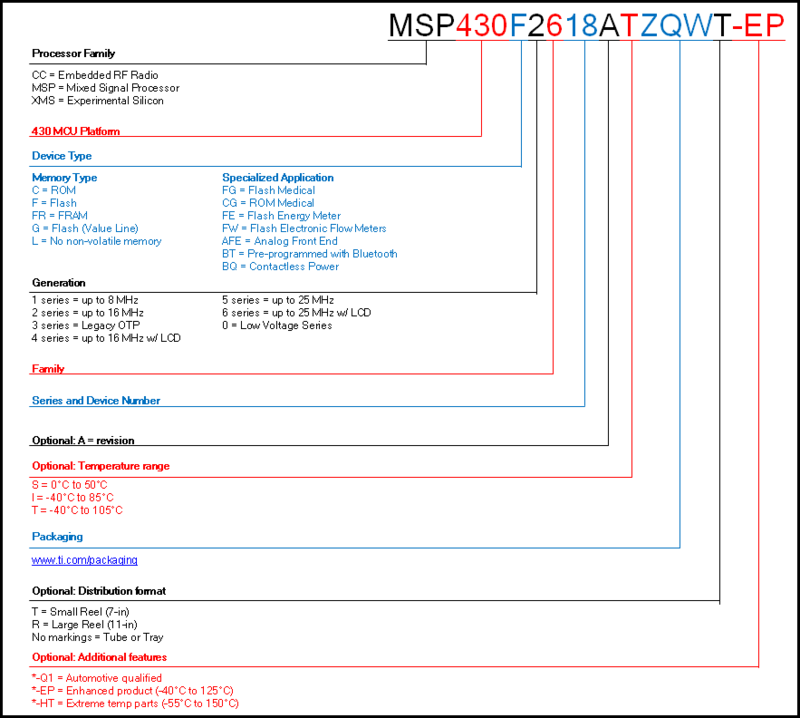
However, there are cases where the ready board does not exist or if it exists it has features far beyond what we need.
For example, we may need to control a power load through a relay, but we only have Shields for sale with 4 relays.
We pay for four and use only one, which besides being a waste, can compromise a project in which we want to occupy the smallest possible space.
In this case, it is best to build the Shield, so we need a circuit for this purpose.
In this site we have many projects of drivers and shields where we find several options for these interfaces, from common components to adding additional features such as an external timer or other feature that no longer needs to be programmed.
Another possibility is that there is no Shield for what we want to do which requires not only a circuit for its activation but also the circuit itself.
For example, if we are creating a high-powered sound alarm, in addition to the drive circuit that involves, for example, a relay, we also need the siren itself to be controlled.
Assembling a specific Shield for this, we can take a different approach to the problem: we can make the siren controlled by the microcontroller, for example, Arduino eliminating many components.
The adaptation of common circuits "building blocks" like the ones we have in thousands of our articles, circuit bank, mini-design and in this book, offers a range of gigantic ideas.
We can use development Shields, as in Figure 3 which contains an array of contacts.
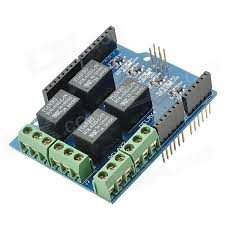
More than that, we can use our simulations to verify if a project works not necessarily using a microcontroller that is available in the simulator.
The Electronics
Although microcontroller boards such as Arduino, MSP430, PIC and others contain most of the electronics we need in our projects, basic knowledge of electronics is still critical to the development of a project, except in a few cases where Shields do everything.
Knowing electronics to know what to call, how to call and what to program is fundamental for projects involving these boards.
On our site, besides a vast amount of theoretical articles that deal with circuits, projects and interpretation of diagrams, and the principle of how everything that is electronic functions, the reader will also have the possibility to acquire courses and books of support.
Sensors Shields
Just as we have the actuator circuits, the signals which control our design can come from the most diverse types of sensors.
Many of them can be attached directly to the boards as they provide compatible signals such as LDRs, thermistors, micro-switches, etc.
However, in some cases, signals are not compatible with inputs requiring special Shields that process their signals to an appropriate form of driving.
We have in this case, Shields of inertial sensors and even radio signals which can receive the control signal from a cell phone or tablet through Wi-Fi connection.
While in some cases these Shields can also be built, there are many of them that can be purchased ready.(figure 4)
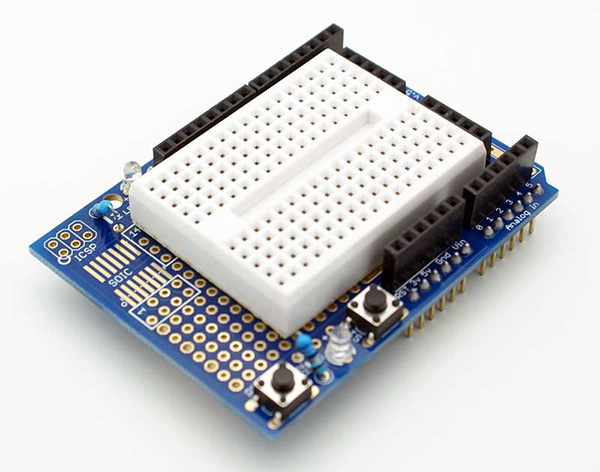
Where to get Shields
MOUSER ELECTRONICS also provides excellent quality, original and Shields with their reliability already proven.
Just access its site through our advertising and in the search enter the word "shield" that the reader will see all available options.
Breakout Boards
In addition to the shields, which are boards that contain peripherals for microcontrollers such as the Arduino, there are the so-called Breakout Boards.
Breakout Boards
As the English name suggests, these boards contain a single component that because of their very small dimensions cannot be connected directly to a microcontroller board through their outputs and so they are "broken" or expanded in order to have access to their terminals, as shown in Figure 5.
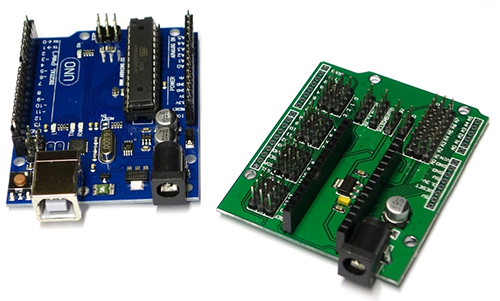
This allows us to work with this single component coupled to a microcontroller, to develop a project, to evaluate its operation, or to complement a project which requires its presence.
This is the case of an integrated circuit which then has its pins made accessible so that they can easily be connected to a microcontroller.
It would be the equivalent of a contact matrix, but in the form of a printed circuit board with the component or even some components already welded, as shown in Figure 6.

The advantages of using these boards are diverse.
In addition to the fact size, since the integrated circuits can be SMD instead of the conventional DIP or DIL and do not need to be built on contact matrices, we have the advantage of the safety of the contacts as we can use the welding in the interconnections.
This allows the realization of much more compact assemblies as the IoT designs, wearable and others require in many cases.
Another advantage is that it is possible to use the same board in other projects, if the connection terminals to the microcontroller are unwelded or undone from a board.
We can also cite an extremely important fact that greatly facilitates the developers which is the fact that the pin names are perfectly identified on these boards. (Figure 7)
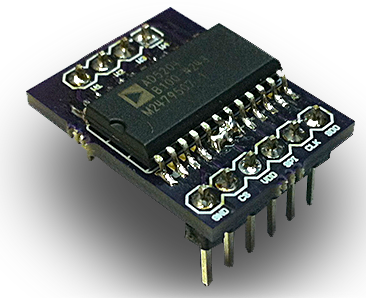
Notice that there is a difference between a shield and a breakout board. The shields contain complete circuits with certain functions, and they are usually larger.
Breakout boards contain one or a few specific components which should be used in the functions of the components that contain and do not contain a circuit function. They are smaller and simpler.
Of course, in some cases, the function of a particular breakout board may be the same as a shield, but this does not always occur and if it occurs, the breakout board can do the same in a simpler way.
To work with a breakout board you have to take the difference into account.
They must have welded connections, which implies the need to have a welder and to have ability in this type of operation, always being careful with the heat excess.
You also have to be aware of the voltages of the components they contain can withstand by choosing the proper power from either the microcontroller board itself or from an additional external source.
At Mouser Electronics you can find many types of Breakout Boards, from several manufacturers as we see below.
Old types
Since the first microcontroller in 1971, the Intel 4004, a myriad of types has appeared over the years and many of them, although they may be considered obsolete, can still be found and used mainly for didactic purposes mainly for its ease of use and low cost .
So it is still common to find projects or even schools that are still based on microcontrollers like the Z80, 80C51, COP8, etc.
On the internet there are many websites and forums which discuss projects using these microcontrollers.